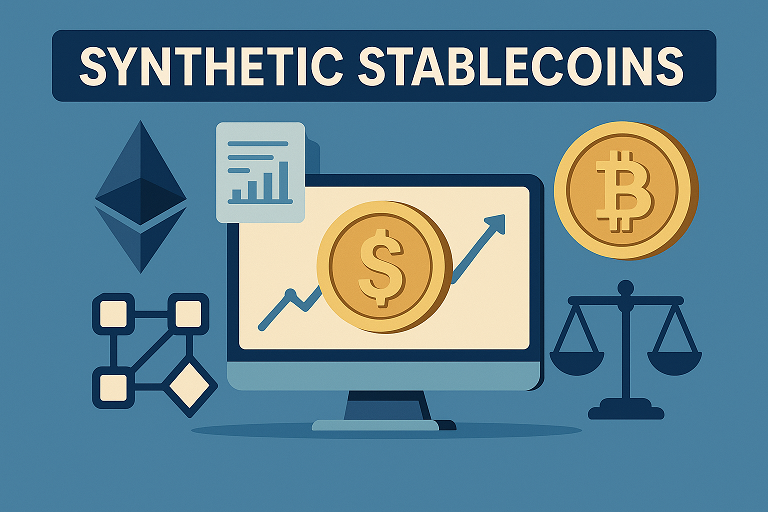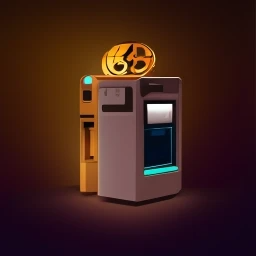Synthetic Stablecoins are emerging as a pivotal innovation in the world of digital finance, offering new ways to maintain price stability without relying on traditional asset backing. As decentralized finance (DeFi) grows and blockchain technology matures, Synthetic Stablecoins are beginning to challenge conventional stablecoin models and reshape financial ecosystems.
Understanding Synthetic Stablecoins
Synthetic Stablecoins differ fundamentally from traditional stablecoins. Whereas traditional stablecoins are backed directly by fiat currencies or tangible assets, Synthetic Stablecoins derive their stability through financial engineering, often using smart contracts, derivatives, and algorithmic mechanisms. They aim to replicate the price behavior of real-world assets without holding those assets directly.
This synthetic design introduces a fresh dynamic to the world of crypto assets, offering flexibility, reduced custodial risk, and enhanced decentralization. Instead of relying on a trusted custodian to hold reserves, Synthetic Stablecoins depend on protocols that use combinations of collateralization, incentives, and automated market operations.
How Synthetic Stablecoins Work
Synthetic Stablecoins usually maintain their peg through a hybrid approach involving excessive collateralization paired with self-adjusting algorithmic techniques. Participants lock various cryptocurrencies as collateral into smart contracts, enabling the issuance of Synthetic Stablecoins that are pegged to a reference value such as the U.S. dollar.
For example, a user might deposit Ethereum into a smart contract that locks the assets and issues a dollar-pegged synthetic coin. When the collateral’s value drops past a predetermined safety margin, the system can trigger automatic liquidations to preserve the integrity and stability of the synthetic token.
Alternatively, some Synthetic Stablecoins use algorithmic mechanisms that dynamically expand or contract the token supply based on real-time market demand, striving to maintain stable prices without holding physical collateral.
Advantages of Synthetic Stablecoins
Synthetic Stablecoins offer several benefits that make them attractive to users and developers in the DeFi space:
- Decentralization: By avoiding reliance on centralized custodians or banking systems, Synthetic Stablecoins enhance the decentralized ethos of blockchain.
- Transparency: Protocols governing Synthetic Stablecoins are typically open-source, allowing anyone to audit the systems.
- Flexibility: They can be pegged to a broad spectrum of underlying assets, including commodities, stock indices, or even other cryptocurrencies.
- Reduced Regulatory Risk: Without direct custody of fiat assets, issuers of Synthetic Stablecoins may face fewer regulatory hurdles in some jurisdictions.
Challenges and Risks of Synthetic Stablecoins
Despite their advantages, Synthetic Stablecoins face significant challenges:
- Collateral Volatility: The high price volatility of assets used as collateral could destabilize Synthetic Stablecoins during severe market downturns.
- Complexity: The mechanisms behind Synthetic Stablecoins are often complicated, making them less accessible to everyday users.
- Liquidity Risks: Maintaining sufficient liquidity in collateral pools is critical to absorbing market shocks.
- Adoption Hurdles: Building trust and understanding among users remains a major challenge, particularly when dealing with complex financial instruments.
Popular Projects Using Synthetic Stablecoins
Several notable projects are pioneering the Synthetic Stablecoins space:
- Synthetix: One of the earliest and most prominent platforms, Synthetix allows users to create synthetic assets (Synths) that track a wide variety of asset prices.
- UMA (Universal Market Access): UMA focuses on creating synthetic assets and decentralized financial contracts on Ethereum.
- Mirror Protocol: Operating on the Terra blockchain, Mirror Protocol empowers users to generate synthetic tokens that reflect the price dynamics of traditional assets like stocks.
Each of these platforms uses different mechanisms to maintain the stability and accuracy of their synthetic assets, demonstrating the diversity and innovation within the Synthetic Stablecoins landscape.
Synthetic Stablecoins vs. Traditional Stablecoins
Understanding the differences between Synthetic Stablecoins and traditional stablecoins is crucial for evaluating their potential impact:
| Feature | Traditional Stablecoins | Synthetic Stablecoins |
|---|---|---|
| Backing | Fiat or real-world assets | Crypto collateral or algorithmic systems |
| Custody | Centralized (often with banks) | Decentralized protocols |
| Transparency | Varies by issuer | Typically open-source |
| Risk | Regulatory, custodial | Collateral volatility, algorithmic failure |
| Flexibility | Limited to fiat currencies | Broad range of pegged assets |
Both types serve important roles, but Synthetic Stablecoins could offer superior decentralization and flexibility for the evolving DeFi ecosystem.
Use Cases for Synthetic Stablecoins
Synthetic Stablecoins open up numerous possibilities within and beyond DeFi:
- Cross-border Payments: They can facilitate fast, cheap international transfers without reliance on fiat banking systems.
- Hedging and Risk Management: Traders and investors can use Synthetic Stablecoins to hedge exposure to volatile crypto assets.
- Access to Traditional Markets: Through synthetic versions of stocks, commodities, or indices, users can gain exposure to traditional financial markets directly from a blockchain environment.
- Decentralized Lending and Borrowing: Synthetic Stablecoins can enhance the lending and borrowing markets by providing stable mediums of exchange and collateral options.
Future of Synthetic Stablecoins
The trajectory of Synthetic Stablecoins depends on several factors:
- Technological Innovation: Continued advancements in smart contracts and financial engineering will be crucial.
- User Education: Simplifying the user experience and improving understanding will drive broader adoption.
- Regulatory Evolution: As regulators begin to understand Synthetic Stablecoins better, clear and supportive frameworks could foster their growth.
- Market Demand: Demand for decentralized, stable, and diverse financial products will influence the future proliferation of Synthetic Stablecoins.
As blockchain networks scale and DeFi becomes more integral to global finance, the role of Synthetic Stablecoins is expected to expand dramatically.
Conclusion: Embracing the Potential of Synthetic Stablecoins
Synthetic Stablecoins usher in a transformative vision of financial stability in the digital age. By removing the reliance on traditional financial intermediaries and fiat reserves, they embody the decentralized spirit of blockchain technology while offering practical benefits like transparency, flexibility, and accessibility.
Despite the challenges they face, the innovation surrounding Synthetic Stablecoins points to a future where stability is achieved not through centralized control but through decentralized design and collective trust in code.
As new generations of Synthetic Stablecoins emerge, we can expect them to play an increasingly critical role in shaping the next phase of decentralized finance and the broader digital economy.


















